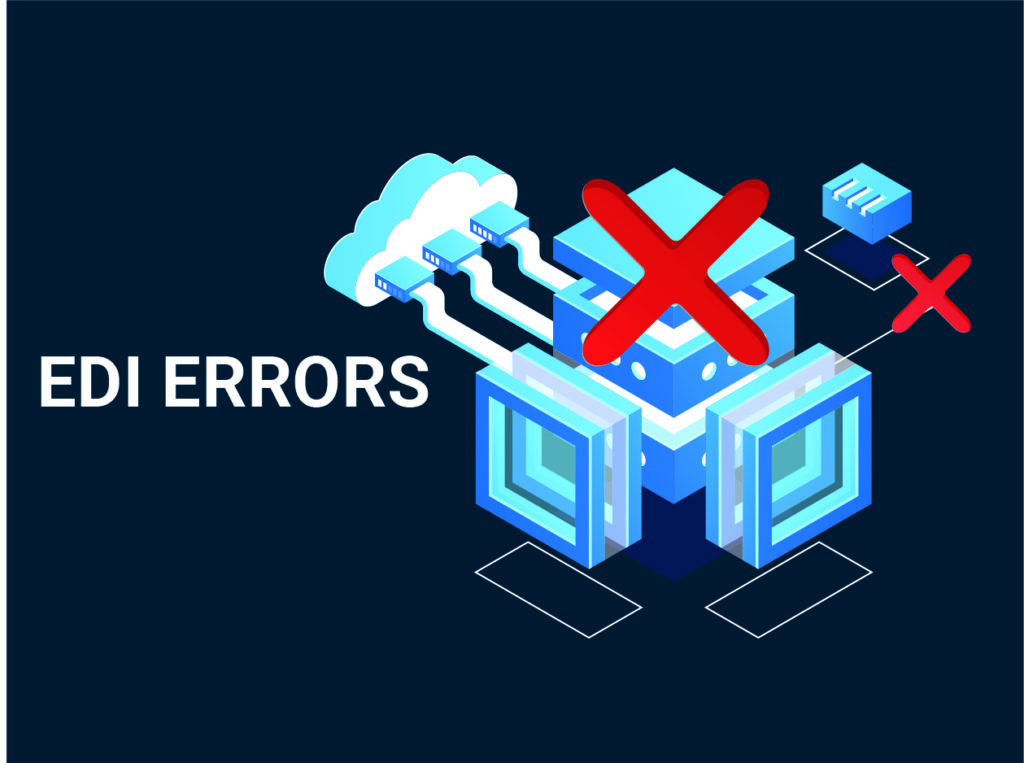The impact of failed EDI on Supply Chain
The areas of focus for Supply Chain specialists have not really changed over the years. The events of 2020 have caused a shift in focus for many. Costs, optimisation, and risk are at the top of the agenda, with an emphasis on how a supply chain centred business can be both resilient and agile. Continual improvement is essential for a successful supply chain to remain competitive in the market, but how do they ensure all areas are covered? Before we dive into the EDI side of things, such an EDI error, let us look at one of the most talked about risks.
Downtime
Most people consider downtime to be when their IT systems are offline. However, if we investigate what IT systems are used to run a business; it starts to get overly complex. It is not just the ERP (Enterprise Resource Planning) system that can go down, but a plethora of applications critical to your business running successfully. For those businesses centred around supply chain in some form, whether being a manufacturer, logistics and distribution or warehouse business, they should be aware of their EDI downtime.
Let us put this into context and look at the average cost of downtime in manufacturing:
‘Research shows that the average manufacturer deals with 800 hours of downtime per year – or more than 15 hours per week – and the costs can be outrageous. Just for perspective, consider that the average automotive manufacturer loses $22,000 per minute of downtime.’
This shows that for manufacturing businesses, any loss of critical technology, such as EDI, is very costly. Still, downtime is not the only thing to consider. As with all technology, maintenance is required, and issues may occur. So, what are the EDI issues that can be prevented to reduce risk and cut costs within the supply chain?

EDI errors
Supply chain EDI transactions involves sending data to and from different businesses in the correct formats for each system to interpret.
EDI errors can be anything from incorrectly formatted data, meaning the syntax of the message is incorrect to business data within these messages. Both result in a delay or inaccurate data being sent to your trading partner. Delays in getting the correct information round your supply chain can cause production to halt and heavy fines. It is imperative that EDI data is correct.
How do they occur?
Human Error
An EDI error occurs mostly through human interaction. For example, when an invalid product number, or quantity or address is specified. As a result, it is important to automate as much as possible to reduce any area for error.
Fact: ‘Studies suggest that up to 5% of all manually entered invoice data is typed incorrectly.’
Automation/data integration issues
Even when automation has been set up to seamlessly integrate data between two parties, issues can arise. If one party makes even a slight change to their set up, the data can be interpreted incorrectly, leading to mistakes and delays further along the supply chain.
Suggested reading: To find out how to solve common B2B integration challenges in this article.
EDI Error codes and what causes them
There are many types of EDI error codes which occur for many varied reasons. Typical EDI error codes can be fixed by EDI experts, as they are widely known. However, there are uncommon types of error codes which can take more time to resolve. It is these uncommon EDI errors which can become costly to a business.
For example, to send incorrect data, or incorrectly formatted EDI messages. These can be caused by using incorrect ‘qualifiers’ in the data, or for the data to be structured in a way that is not understood by your trading partners systems.
Yet common issues are in the actual transmission of the EDI data. When sending data, two parties must exchange and agree to send data over agreed protocols. Mistakes can be made when setting this up, e.g., firewalls left closed, or encryption details inaccurate or incorrect. This will prevent the data from being sent and cause delays in the supply chain, some of which we will go into more detail next.

Impact of EDI errors on Supply Chain
Incorrect EDI data can cause issues for both the sender and the recipient. When incorrect EDI is received it could mean, for example, that the customer is expecting more stock than what is delivered. EDI Errors can lead to several operational process inefficiencies e.g., delivery of the wrong items, items not turning up, orders never being received to warehouses or taken to the wrong warehouses. This leads to disputes between the parties, causing wasted time and thus money.
Fact:‘Disputes are encountered on 5%–25% of inbound receiving orders with 2 hours taken to manage each inbound dispute’, GS1, Cost to Serve Whitepaper.
Business Impact of EDI errors
Not only does failed EDI cause issues in the supply chain but within the business as well. Below we have outlined a few of the impacts failed EDI can have on a business.
EDI Chargebacks
An EDI Chargeback is like a penalty fine. When an important document is late or missed, such as a shipping notice, the customer may charge the supplier. This is due to the inconvenience and loss of money to the customer because of the supplier not delivering what was agreed. Penalties can range from containing errors, however, they can reach a high amount depending on the severity of the of the issue and the industry that is involved.
Unhappy customers/trading partners
Deliveries not turning up and deliveries with the incorrect items/stock will make the trading partners you deal with not happy. Not only on a business level will this penalise you, but on a personal level they will associate you emotionally with an unpleasant experience.
Increased pressure
During these operational inefficiencies, your trading partners employees as well as your own employees will become stressed. As the impact further up or down the supply chain hits, pressure intensifies. Employees may work overtime to resolve the issue(s) costing the business further money. If these problems keep occurring employees may end up suffering from burnout. We all know that employee motivation and team coherence make a dramatic difference to business growth.
Industry Examples
The impact on the supply chain and consequently the business can vary depending on what industry vertical it works in.
Example: Automotive
The Automotive industry is one of the most complex when it comes to supply chain, this is due to the length of some to the chains involved in the production. Any change, incorrect information or delays can have an enormous impact across all who are involved. OEM’s generally use a point system, known as ‘speedy points.’ If a supplier makes an error, points will be deducted, this is the way suppliers are rated.
In a ‘just in time’ environment such as an automotive manufacturer like Ford, when parts are not received it can hold up the production line. Downtime costs a lot of money and very often fines are passed onto the supplier. The reliability is reviewed with the supplier and this can mean not winning tenders for future work with this customer.
Penalty fines within the Automotive space are based on efficiency, the time it takes to resolve or rectify the situation. The longer it takes the supplier to provide the information that is needed in the correct format, the larger the fine. We are talking £10k increments here!
After losing those important ‘speedy points,’ the suppliers rating will be low, affecting its ability to win future contracts In addition to the fines, OEM’s can choose to carry out an audit on the supplier.
Example: Retail
If we look at the Retail industry, specifically Apparel:
Fact: The wrong product being hung up in the store, costing an average of £0.40 per unit.
Now let us expand onto this retail example by looking at one of the largest e-commerce companies, Amazon:
Working with Amazon as a vendor is not easy as they have a lot of requirements. These requirements are largely operational, which when not adhered to becomes costly. The costs related to failing Amazons requirements are known as ‘chargebacks’ or ‘charge disputes.’ As a vendor it is critical you understand these requirements and keep on top of any changes, to ensure you mitigate the risk of these extra costs being incurred.
Fact: As of February 2021, Amazon changed their ‘carton level information ASN/SSCC process’ which if not adhered to “currently incurs a chargeback at £0.05, €0.06, $0.10 per SKU received. For example, if you have 48 units in one box, you will incur a £2.40 chargeback.”
How can EDI errors be prevented?
EDI errors can be prevented by putting in automated validation processes, software that can review and test the structure of the data being sent and received. On top of this ensuring that that full visibility and alerting is available, so that in the event of an error, specialised staff can react quickly to correct it. Expert EDI staff are sort after, plus a dying breed due to our education systems not training fresh blood up on this specialist area which is critical to supply chains across the world. As a result, businesses are often set up in a way that they either have limited internal EDI resource and supplement it with and EDI provider, or they outsource completely to an EDI provider who can cover all aspects required.
Pro tip: To improve your EDI supply chain management:
– Set up automation software for error notifications.
– Get real-time visibility of your EDI transactions.
Suggested reading: VAN (Value added network) Consolidation article
Reducing your overall EDI risk
For those businesses who do not have any internal EDI resource, we would suggest you consider a Support package which will cover you if any EDI errors arise and ensure they are resolved quickly, reducing risk.
However, if you have not considered EDI before, we recommend you get into contact with an experienced EDI provider who can advise on the best approach to EDI for your business. This will not only ensure a successful EDI set up, which reduces risk, but reduces cost and increases efficiency for your business.
If you do not have EDI adoption across your supply chain and there are some gaps, this can significantly impact on the efficiency of the other areas which do use EDI. Unless EDI is implemented across the whole supply chain, the effectiveness can be damaged, opening various supply chain risks such as delays and the post effects of that. In this case, and EDI provider can carry out an audit to investigate any gaps.
Pro tip: Outsourcing the ownership to an EDI Managed Service Provider can ensure EDI risks are managed successfully.
Suggested reading: To find out more about this option, check out our blog – Top 5 reasons to switch to EDI managed services































































































































